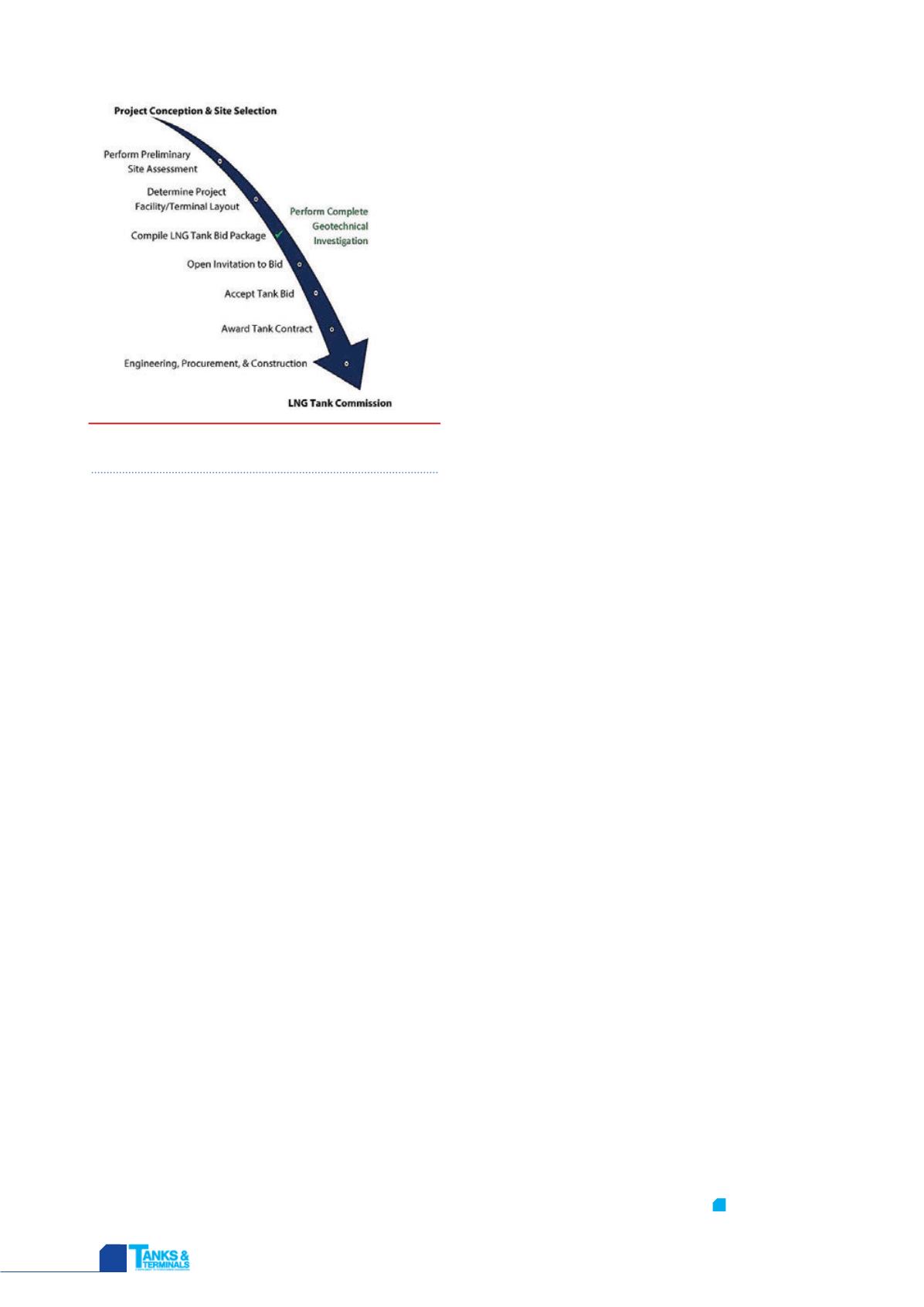
HYDROCARBON
ENGINEERING
24
hindered. Cost and schedule estimates decrease in
accuracy while project risk increases, which makes
awarding a contract significantly more difficult. Instead of
an owner deciding between the most optimal designs with
the best budget and schedule, they are instead betting on
which tank contractor makes the most accurate
assumptions.
For example, assume only Borings 3 and 4 in Figure 1
were done prior to invitation to bid. A conservative
assumption made by one company would include Layer H
beneath the tank. If Layer H is a soft soil such as peat, the
tank would be expected to experience large settlements, a
high liquefaction potential, and would be assigned a Site
Class E. All of these factors would require either a deep
foundation with multiple piles or a short tank
configuration.
However, when compared to the actual soil conditions
present beneath the tank, i.e., no Layer H, assumptions
based on Borings 3 and 4 are much too conservative.
Because more piles or a shorter tank are more costly and
require longer construction schedules, the owner pays
more for an unnecessary design. On the other hand, if
Layer H was present beneath the tank, but a tank
contractor assumed otherwise, the resulting tank and
foundation would be under designed for the site. However,
this error would not be discovered until after contract
award requiring a new tank design, extending the
engineering and construction schedules, and exceeding
estimates and costs.
By providing information to create an equal beginning
design basis, fewer assumptions will be made about the
soil profile and its expected performance, giving the owner
a clearer understanding of the contractors’ bids.
Potential savings of early
action and communication
Early timing of a comprehensive geotechnical investigation
is crucial not only to reduce assumptions in design, but
also to avoid the costly follow up investigation to fill
information gaps. If adequate information is not provided
during the bid process, a necessary additional survey is
done after awarding the contract to complete the design.
These additional surveys can add significant cost
(potentially up to US$400 000) and time (2 - 3 months at
the front end of the engineering schedule) to the bid cycle.
Additionally, lack of sufficient soil information can
result in critical conditions being overlooked. Voids, soft
soils, or buried debris can delay the construction schedule.
On the contrary, if conditions such as those are known
earlier via a complete geotechnical survey, mitigation
strategies can be pursued sooner in project schedules at a
lower cost.
Altogether, the potential for cost and schedule savings
can be significant. Though dependent on the site’s
conditions, a deep foundation design resulting from
minimal or delayed information can require a 3 - 5 month
construction schedule. Comparatively, a value design, such
as a shallow foundation with ground improvement,
may only take 2 - 3 months. Furthermore, the cost
differential between these two designs may range from
US$3 - 7.5 million/tank.
Therefore, the potential combined savings to the
owner could include: three months in the construction
schedule, and any additional weeks saved by discovering
obstacles prior to the start of construction, 2 - 3 months in
engineering, up to US$400 000 for avoiding a secondary
investigation, and possibly up to US$7.5 million/tank as a
result of value engineering. Overall, investing in a single
and complete survey produces a positive return for both
the project’s finances and schedule.
Minimising risk through
geotechnical investigations
The quality of the geotechnical investigation directly
affects the accuracy of the tank and foundation designs,
and therefore, the accuracy of the bid packages provided
to the owner and project developers. Without complete
information, possibly inaccurate assumptions must be
made, which may be too liberal or conservative. Even
supplementing client provided information by using a third
party introduces new variability into the design basis and
complicates the owner’s decision.
Ultimately, a complete, early, and singular party
geotechnical investigation allows for a solid design basis
that is common to all bidders. By eliminating design basis
assumptions, owners are able to make more informed
decisions when awarding the contract. Additionally, by
eliminating the need to perform late investigations,
problems are addressed earlier and more efficiently,
engineering and construction schedules are shortened, and
value engineering is pursued to create a cost efficient
design. Furthermore, the potential for expensive and time
intensive design adjustments after contract award is
curtailed and minimised.
Each of these benefits represents a reduction of risk to
the project, to the owner, and to the contractor. By taking
action early in the project development lifecycle, all
involved stakeholders are able to contribute to a more
efficient and accurate design process.
T&T
Figure 4.
Project development lifecycle and
optimal timing of geotechnical investigation.


